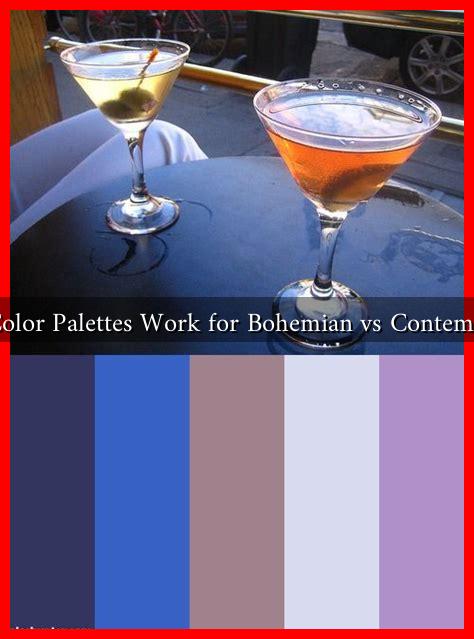-
Table of Contents
What Color Palettes Work for Bohemian vs Contemporary?
Color palettes play a crucial role in defining the aesthetic of any interior design style. Two popular styles, Bohemian and Contemporary, offer distinct approaches to color selection. Understanding the nuances of these palettes can help homeowners and designers create spaces that resonate with their desired vibe. This article explores the color palettes that work best for Bohemian and Contemporary styles, providing insights and examples to guide your design choices.
Understanding Bohemian Color Palettes
The Bohemian style, often referred to as “Boho,” is characterized by its eclectic and free-spirited nature. This style embraces a mix of colors, patterns, and textures, creating a warm and inviting atmosphere. Here are some key features of Bohemian color palettes:
- Rich, Earthy Tones: Colors like deep reds, burnt oranges, and rich browns are commonly used to evoke a sense of warmth and comfort.
- Vibrant Accents: Jewel tones such as emerald green, sapphire blue, and amethyst purple can be incorporated as accent colors to add depth and interest.
- Natural Hues: Shades inspired by nature, including olive greens, sandy beiges, and sky blues, help to create a harmonious and grounded environment.
- Layered Textures: The Bohemian style often combines various textiles and patterns, allowing for a playful mix of colors that can include floral prints, paisleys, and ethnic motifs.
For example, a Bohemian living room might feature a deep burgundy sofa paired with a vibrant turquoise throw and an array of patterned cushions. The walls could be painted in a soft beige to provide a neutral backdrop that allows the colors to pop.
Exploring Contemporary Color Palettes
In contrast, the Contemporary style is defined by its clean lines, minimalism, and a focus on functionality. The color palettes in Contemporary design tend to be more restrained and sophisticated. Key characteristics include:
- Neutral Base: Whites, grays, and beiges serve as the foundation for Contemporary spaces, creating a calm and serene environment.
- Bold Accents: Bright colors like electric blue, vibrant yellow, or fiery red can be used sparingly as accent pieces to create visual interest without overwhelming the space.
- Monochromatic Schemes: Many Contemporary designs utilize varying shades of a single color to create depth and dimension while maintaining a cohesive look.
- Metallic Touches: Incorporating metallics such as gold, silver, or copper can add a touch of elegance and modernity to the overall palette.
A Contemporary dining room might feature a sleek white table paired with black chairs, accented by a bold red centerpiece. The walls could be painted in a soft gray, allowing the furniture and decor to stand out.
Case Studies: Successful Implementations
To illustrate the effectiveness of these color palettes, consider the following case studies:
- Bohemian Café: A local café embraced the Bohemian style by using a mix of vibrant colors and patterns. The walls were adorned with colorful murals, and the furniture featured mismatched chairs in various hues, creating an inviting and eclectic atmosphere that attracted a diverse clientele.
- Contemporary Office Space: A tech startup opted for a Contemporary design in their office, using a neutral color palette with pops of color in their artwork and furniture. This approach fostered a professional yet creative environment, enhancing productivity and collaboration among employees.
Choosing the Right Palette for Your Space
When deciding between Bohemian and Contemporary color palettes, consider the following factors:
- Personal Style: Reflect on your personal preferences and lifestyle. Do you prefer a relaxed, eclectic vibe or a sleek, modern aesthetic?
- Functionality: Consider the purpose of the space. A lively Bohemian palette may be ideal for social areas, while a Contemporary palette may suit workspaces better.
- Lighting: Natural light can significantly affect how colors appear. Test paint samples in different lighting conditions to see how they interact with your space.
Conclusion
In summary, the choice between Bohemian and Contemporary color palettes hinges on personal style, functionality, and the desired atmosphere of the space. Bohemian palettes thrive on rich, earthy tones and vibrant accents, creating a warm and inviting environment. In contrast, Contemporary palettes favor neutral bases with bold accents, promoting a clean and modern aesthetic. By understanding these differences, you can make informed decisions that enhance your living or working space. For more inspiration on color palettes and design styles, consider visiting Houzz.


